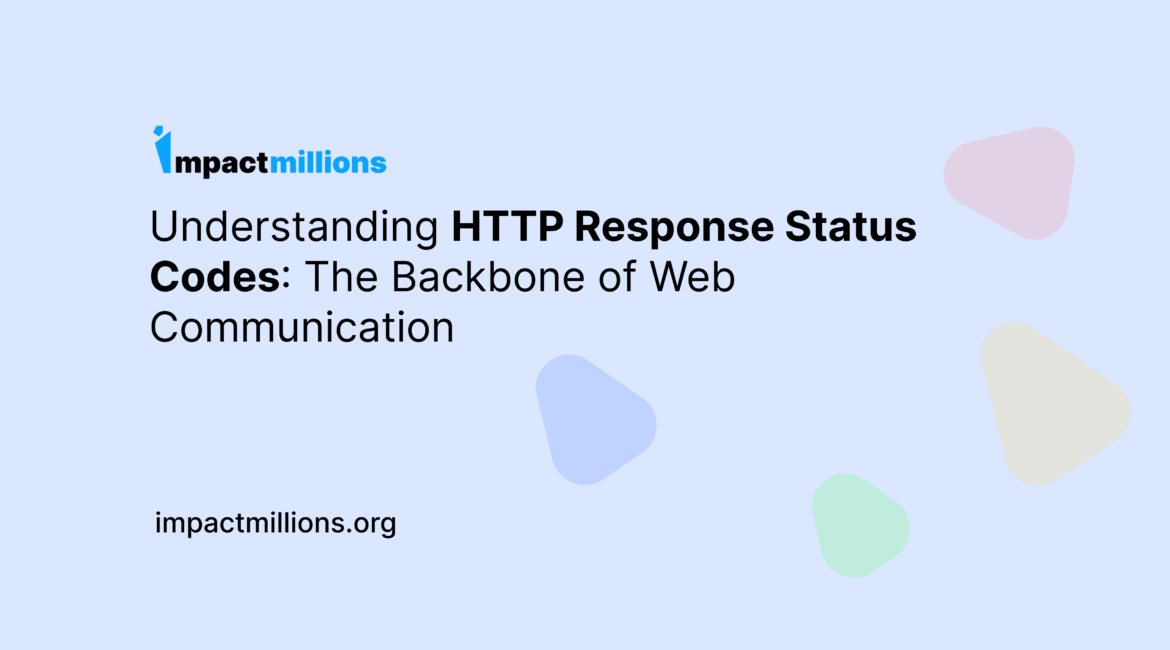Table of Contents
Have you ever wondered how web servers communicate with web browsers to deliver content seamlessly? HTTP (Hypertext Transfer Protocol) plays a crucial role in this process, and within its framework, response status codes serve as vital communication tools. In this article, we will explore the significance of HTTP response status codes, their purpose, and how they enhance the web browsing experience.
The Role of HTTP Response Status Codes
When you enter a URL in your web browser and hit “Enter,” a series of interactions occur behind the scenes. The browser sends a request to the web server, asking for a specific resource such as a webpage, image, or file. In response to this request, the server returns an HTTP response containing the requested resource along with a status code. The status code serves as a concise numerical representation of the server’s response to the browser’s request.
Purpose and Benefits
- Informative and Efficient Communication: HTTP response status codes provide a standardized and efficient way for servers to communicate with browsers. Instead of lengthy messages, a three-digit numerical code conveys the outcome of the request quickly and unambiguously.
- Request Outcome Classification: Status codes categorize responses into different classes, each indicating a specific type of outcome. This classification allows both the browser and any intermediary systems (such as proxies or firewalls) to understand how to handle the response appropriately.
- Diagnostic Tool: Status codes act as a diagnostic tool for developers and system administrators. By examining the code, they can gain insights into the nature of the issue and troubleshoot problems more effectively. This aids in debugging, identifying misconfigurations, or addressing broken links.
Common HTTP Response Status Code Classes
HTTP response status codes are grouped into five classes, identified by the first digit of the code. Let’s delve into each class and explore their purpose:
- Informational (1xx): These status codes signify that the server has received the browser’s request and is still processing it. They are primarily informative and rarely encountered during normal web browsing.
- Success (2xx): These status codes indicate that the server has successfully fulfilled the browser’s request. The most common code in this class is 200 (OK), indicating a successful retrieval of the requested resource.
- Redirection (3xx): These codes inform the browser that further action is required to complete the request. For instance, the server might redirect the browser to a different URL or suggest an alternate location for the requested resource.
- Client Error (4xx): When a browser sends a request that the server cannot fulfill due to client-side errors, such as an invalid URL or unauthorized access, the server responds with a status code from the 4xx class. Examples include 404 (Not Found) or 403 (Forbidden).
- Server Error (5xx): These codes indicate that the server encountered an error while processing the browser’s request. They typically occur due to server overload, misconfigurations, or temporary unavailability. Common examples are 500 (Internal Server Error) or 503 (Service Unavailable).
Commonly Encountered HTTP Response Status Codes
Now let’s explore some frequently encountered HTTP response status codes and their meanings:
- 200 OK: This status code signifies a successful request. It is commonly returned for GET requests when the requested resource is found and returned in the response body.
- 301 Moved Permanently: This code indicates that the requested resource has been permanently moved to a new URL. The client is advised to update its bookmarks or links accordingly.
- 404 Not Found: When a client requests a resource that does not exist on the server, the server responds with this code. It is a common error encountered when a webpage or file is removed or the URL is mistyped.
- 403 Forbidden: This code is returned when the client does not have sufficient permissions to access the requested resource. It may occur when trying to access restricted areas of a website or when authentication is required.
- 500 Internal Server Error: This code is a generic server-side error message. It indicates that something unexpected happened on the server while processing the request, preventing it from completing the task.
Conclusion
HTTP response status codes are an integral part of web communication, ensuring efficient and standardized interactions between web servers and browsers. By providing concise information about the outcome of a request, status codes enable browsers to interpret and display content appropriately. Moreover, these codes aid developers in troubleshooting and diagnosing issues, leading to more effective problem-solving.
Next time you browse the web and encounter an error or a successful request, take a moment to observe the status code that accompanies it. Understanding these codes will deepen your knowledge of how the web functions and empower you to navigate the digital landscape more effectively.
